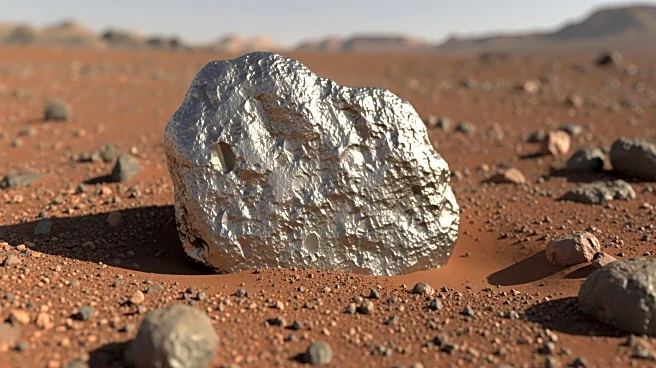What's Happening?
NASA's Perseverance rover has identified a unique rock in Mars' Jezero crater, which is believed to be a meteorite. This discovery marks the first time Perseverance has found a meteorite during its mission.
The rock, named 'Phippsaksla,' measures approximately 31 inches across and contains high concentrations of iron and nickel, suggesting it originated elsewhere in the solar system. The finding was announced after a delay due to the U.S. government shutdown, which affected NASA's operations. Despite the shutdown, Perseverance continued its mission-critical operations.
Why It's Important?
The discovery of a meteorite on Mars by Perseverance is significant for planetary science, as it provides insights into the composition and history of the solar system. Meteorites can offer clues about the materials present in space and the processes that shaped planetary bodies. This finding may help scientists understand the frequency and impact of meteorite collisions on Mars, which could have implications for future exploration and the search for past life. The presence of iron and nickel in the meteorite also highlights the diversity of materials that can be found on Mars.
What's Next?
Following the discovery, NASA scientists are likely to conduct further analyses of the meteorite to determine its age and origin. This could involve comparing its composition to known meteorites on Earth and studying its impact on the Martian surface. The findings may influence future missions to Mars, as understanding meteorite impacts can aid in planning for rover navigation and site selection for exploration. Additionally, the discovery may prompt discussions on the allocation of resources for planetary science research.
Beyond the Headlines
The discovery of the meteorite raises questions about the potential for similar findings on Mars and other planets. It underscores the importance of continued exploration and the need for advanced technology to detect and analyze extraterrestrial materials. The presence of meteorites on Mars also suggests that the planet has been subject to significant cosmic events, which could have influenced its geological and atmospheric evolution. This discovery may lead to new theories about the history of Mars and its potential to support life.












